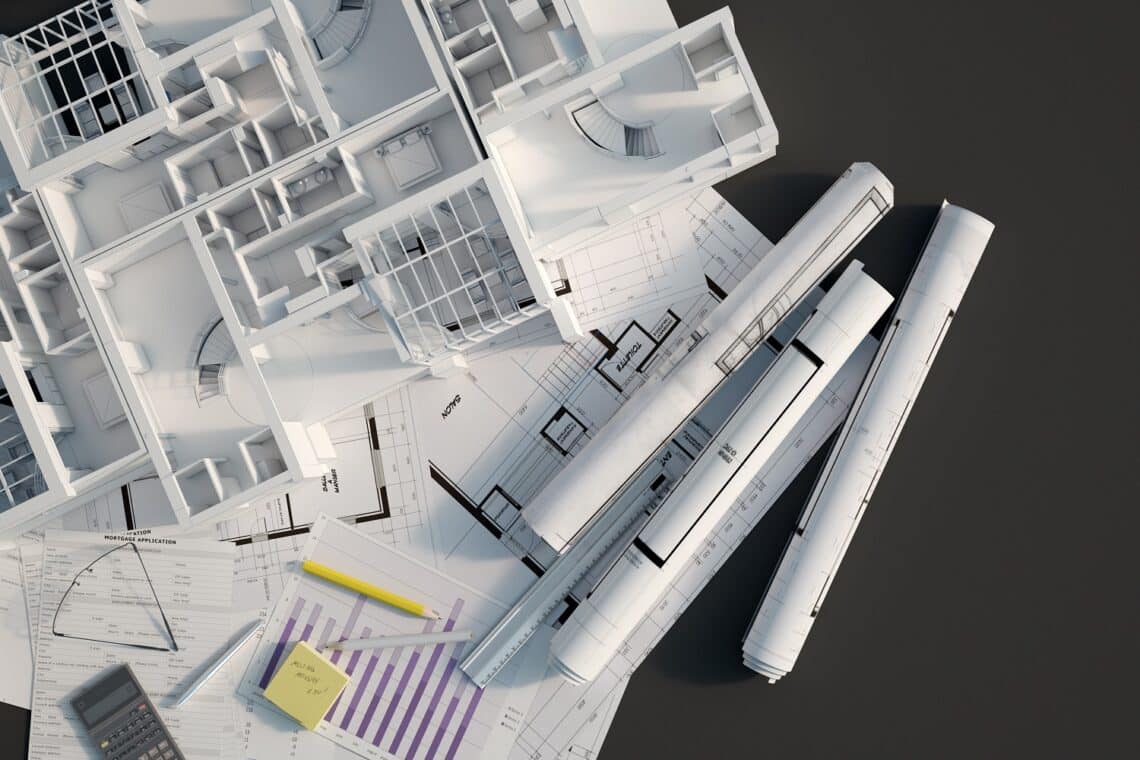Confused about whether the job scene is working out for you? Consider the following situations and know for sure.
Roy loved his job even though he didn’t get a fat paycheck at the end of the month. He enjoyed the challenges it brought and found opportunities to demonstrate his skills.
Jim, on the other hand, found little room for creativity in his role, but he kept his job because it paid well. You may not fully relate to either Roy or Jim, but these situations are common in the architecture realm.
Sometimes your workplace can become stagnant, and you may feel stuck. It’s up to you whether you want to move out or aim for more stability.
What pushes professionals to change jobs may vary with individual expectations, both in terms of job role and compensation. However, salary has a less significant role to play when it comes to overall job satisfaction.
Without further ado, let’s discuss what makes architects truly happy about their jobs.
Follow Your Dreams And Turn Passion Into Profession

Right from the beginning, we’re told to build a career around what we enjoy doing. Therefore, it’s rightly said – “find a job you love, and you’ll never work a day.” However, most of the time, we ignore such sayings, and later, end up wondering if our current job is indeed worth it.
You may like the professional environment and coworkers, but do you genuinely enjoy the work? Also, when was the last time you worked on a project that challenged and brought out the best in you?
If you don’t have an answer, maybe it’s time to put things into perspective. While we usually reassure ourselves, thinking that the next job would be perfect, it may not be that simple for everyone. That said, happiness is a state of mind and is purely subjective.
If you’re passionate about architecture, it does not mean that you’d be content doing any random job pertaining to this field. So, you must find your true calling, and as such, a job role that perfectly fits your profile and preferences. However, it’s easier said than done, and sometimes it may take several years until you figure out what clicks.
You’d be surprised to know that scores of researchers are still working to find out what makes employees happy. After all, multiple studies and surveys have shown that a happy workforce ensures efficiency and higher quality. And these two aspects are the very essence of a successful architecture firm.
Higher Pay = More Happiness
This is undoubtedly the most common response. Employees worldwide claim that they would be happier if their architecture job paid more. Let’s dissect this opinion.
Would you really be happier if your salary was increased?
Recently, in a New York Times article, this issue was discussed in detail. The article stated that money, no doubt, matters; however, not always in the stereotypical ways you think.
It further said, “those who become really good at what they do are capturing a much larger share of total income in almost every domain, leaving correspondingly smaller shares available for others. Moral: Become an expert at something!”
Basically, professionals who are experts in their domain, chip away a larger share of the total revenue, leaving considerably smaller amounts for the rest. So, if you want a bigger piece of the pie, you gotta become an expert.
On the flip side, it also means that higher pay does not equal greater happiness. Several factors, including working conditions, environment, autonomy, learning opportunities, and employer mission deeply impact overall job satisfaction.
Thus, all your efforts should be channelized towards finding an environment that promotes individual growth, learning, and skills. This will benefit your career in the long-term compared to minor pay rises.
Therefore, you should look beyond temporary kicks and work to advance your career, so you can actually enjoy a higher pay early on. Prioritize your goals in a manner such that a hefty check becomes a part of the deal, without you having to sweat over it.

Immersing Yourself
Many professionals stay on the job even if they find the work undesirable. They either don’t have the confidence to take the next step or have become too complacent. Regardless of what the reason might be, you must move out and find a different job ASAP.
Norman Foster, in an interview, while stressing the importance of finding work one enjoys, spoke about the benefits of an immersive experience.
He said, “When you can’t imagine doing anything else, and you would do anything to be able to do it, then you know you’ve made the right decision.” He also mentioned, “From then on it’s a matter of completely immersing yourself in that choice: You live it every living second of your life.”
The Golden Rule Of 10,000 Hours
In his book ‘Outliers’, writer Malcolm Gladwell states that irrespective of the profession you pursue (architecture, music, tennis, etc.), it’s essential to complete deliberate practice of 10,000 hours. Only then can one become a top expert in their field.
To explain further, deliberate practice is a type of training that enhances your skills while testing your limits. Although there’s a lot of debate surrounding this form of practice, the main takeaway here is the importance of focussing on one area for a considerable period.
That said, investing thousands of hours into training is impossible if you’re not interested and dedicated to your work. Simply put, 10,000 hours approximately translates to full-time work for 5 years. However, several professionals go through phases of self-doubt during this tenure, questioning if an architecture career is suitable for them.
Balancing Work And Personal Life
First of all, work is a part of life and not the other way round. However, for many, the lines are blurred, with work taking over personal life.
The main idea behind having an occupation is to generate a monthly income to spend quality time beyond job hours. Nevertheless, if you slog through the week only waiting for Friday to come but dread the next Monday, this is a red flag that you shouldn’t ignore.
If you are not growing, learning, and forming valuable connections, all the while becoming a better professional, you may need to reevaluate your job. Architecture may not be your forte if you don’t enjoy the challenges which come when climbing to the top.

Quitters Are Winners
In a candid discussion with Marie Forleo, the entrepreneur talks about her struggles at the beginning of her career, looking for something she can do for decades. She relied on a very practical approach to determine whether she was headed the right way. Long story short, she observed her seniors in the office and assessed if that’s what she wanted in the future.
By picturing herself in the shoes of her seniors, she could ask the most pertinent question – ‘Is that what I want for myself?’ If the answer was not positive, she resigned and joined elsewhere. This way, she continued to explore and experiment with her areas of interest. Finally, she found a job role that was perfect, long term.
More often than not, professionals are afraid to turn in the letter because of societal pressure and uncertainty looming large. Also, sometimes people feel that inability to adjust is a sign of failure.
However, that’s far from the truth. Many renowned architects worldwide had to face more downs than ups in the early stages of their careers. Therefore, instead of seeing things in a negative light, you must focus on learning from your past experiences.
Sprinter Or Straggler?
Going by a Harvard Business Review article, researchers have found that the new-generation young adults no longer have a one-dimensional career path, unlike their antecedents. Many keep switching jobs, drifting from one place to another till they’re well into their thirties.
In fact, adults in their twenties can be broadly identified as sprinters, stragglers, and wanderers. The researchers went on to conduct a survey and found the following results.
- Sprinters (comprise 35% of the surveyed population) begin their career straightaway after college or work towards a successful initiation after finishing their degree.
- Stragglers (comprise 33% of the surveyed population) take some time off, working on getting a break all along their twenties.
- Wanderers (comprise 32% of the surveyed population) take it slow and start their career, usually after mid-twenties.
That said, young architects are always under pressure to get their career started. Usually, the stakes are very high since they have spent a lot of money and time to get hold of a degree. Thus, they prefer quick gains to long-term benefits while considering the return on investment.
Carer vs. Debt
The same Harvard Business Review article elaborates that even though we expect most graduates to find their respective paths after college, only 1/3rd of them turn into sprinters.
The main differentiating factor that keeps them ahead of the rest 2/3rds is how the former group utilized their undergraduate years. About 84% of the sprinters completed one internship, also 64% wanted to pursue the chosen major. Furthermore, about 43% had a student loan debt of below $10000.
Therefore, it goes without saying, personal finance is a key criterion that could make all the difference. Minimizing your debt amount may seem irrelevant to career options. But when you’re forced to pay bills and other expenses, your ambitions may have to take a backseat. In such cases, people usually end up in a job that does nothing to benefit their actual goals.
So, make sure that your financial situation does not come in the way of career advancement. Start early and pay off the student loans before reaching your mid-thirties.

Final Thoughts – How To Find Your True Calling?
This is hardly an easy question to answer. But we’ll try to provide you with some necessary insights.
First of all, we would like to refer to a piece in the magazine, Entrepreneur, where the author talks about ‘creative exercises’ that can help find your ultimate love, career-wise. The exercises include learning about eminent personalities in your field.
Not all of us must have the same career paths as our peers, so don’t be afraid to step out of your comfort zone. You never know, what you’re genuinely passionate about may lie in these unchartered territories.
No matter what, don’t forget to be the best version of yourself. After all, you’d want to be the top player in your area of specialization. At the same time, we want to say that finding the perfect job is a life-long pursuit, and it shouldn’t stop you from making the journey worthwhile.
With that, we hope this guide has inspired you to become more successful in your architecture career. So, go ahead and live the life you want.
Till next time!






